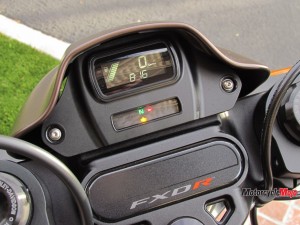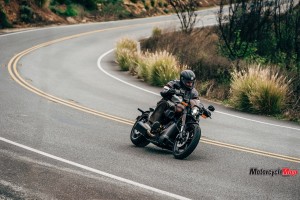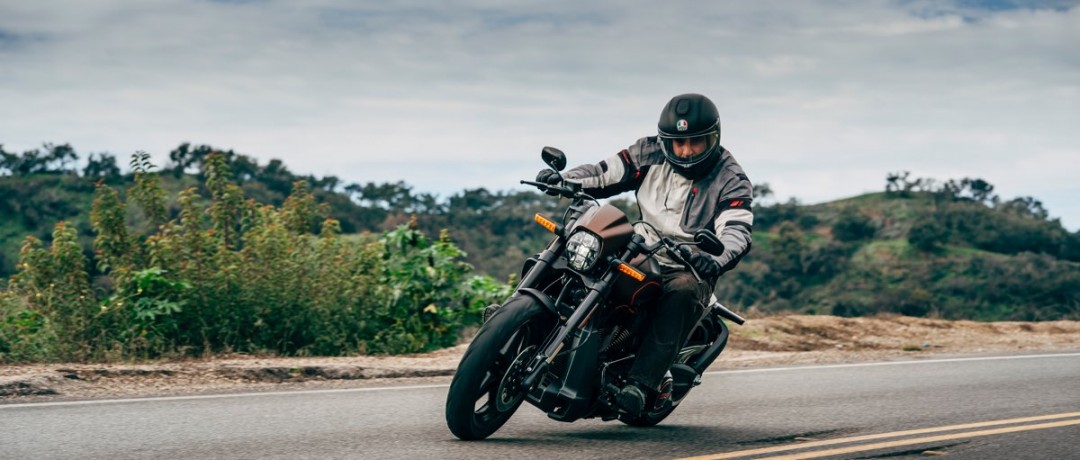It may not fall into the touring or even daily rider category, but it definitely fits nicely into the segment of head-turner.
When the first Harley-Davidson Softail hit showrooms in 1984, I was working as a technician in a Harley dealership. This was just a few years after the company split from AMF, a sporting-goods company that bought Harley in 1969, and through the 1970s had attempted to make the Motor Company more profitable by cutting costs and increasing production. Unfortunately, combining those measures was rather counterproductive, and the result had a detrimental effect on product quality. I remember the Shovelhead-powered Harleys I worked on at the time as being unreliable; they also leaked and vibrated so hard that parts broke.
The Softail changed all that. With twin shock absorbers hidden beneath the bike, it featured a hardtail look, and also introduced a then all-new engine, aptly called the Evolution. The engine proved more reliable and performed better than the Shovelhead it replaced, and the bike’s retro styling struck a chord with both traditional Harley riders and non-Harley riders, so it sold very well. It was popular enough that it helped turn the company around, and if you ask me, it is one of the most significant bikes ever produced by the Milwaukee bike maker. That original FXST Softail eventually became the foundation onto which an entire platform was based, and from which dozens of models have since been spun off.
Softail Consolidation

Harley consolidated its big twins with the new Softail, and all the aforementioned models except the Wide Glide are now built on an entirely new frame, and are powered by the new, counterbalanced Milwaukee-Eight V-twin. The engine is rigidly mounted to the frame, making Harley’s big touring bikes the only ones remaining with rubber-mounted engines. While the Wide Glide has been discontinued, Harley has introduced two new Softail models: the Sport Glide and the FXDR 114.
Harley-Davidson Canada extended an invitation to ride the FXDR 114 in the hills and canyons northwest of Los Angeles, California.
Harley’s Most Radical Softail to Date

Of the six available colours, only the base Vivid Black has some sheen to it; otherwise, all the other colours are matte. Also, you won’t find a single bit of chrome on the bike, unless you count the inner lever portion of the shifter. The price is $26,499 for the Vivid Black model, while any other colour will cost an additional $450. It’s the priciest Softail model in the lineup. As on all big-twin Harleys, ABS is standard.

Riding with T-1000
We began our ride heading north out of Marina del Rey on a Sunday morning, where 45 minutes later, we pulled into the parking lot of Santa Clarita Harley-Davidson. The dealership would normally be closed on a Sunday, but on this day, there were a few bikes in the parking lot and the front door was wide open. As I swung the side stand down and dismounted my bike, a stocky guy in jeans and a plaid shirt reached out and greeted me with a firm handshake. “Hi, I’m Robert Patrick, great to see you!” he said enthusiastically, while I tried to figure out where I’d seen him before.
It took my brain just seconds to connect the person in front of me with the character he’s most famous for: The metallic, morphing robot killer in the 1991 sci-fi flick Terminator 2: Judgement Day. I initially figured that our Harley Canada hosts had invited the actor, who has more than 150 films in his portfolio, to the dealership to awe us with his star power, but I was completely off base with my assumption. Patrick is actually part owner of the dealership, which he bought in August of 2018, with his associate and owner of Glendale Harley-Davidson, Oliver Shokouh. After giving us an enthusiastic tour of his dealership, Patrick, a long-time member of the Boozefighters motorcycle club, led us on a ride in the surrounding canyon roads on his Road Glide.
Now, it didn’t take long in the saddle to find the FXDR’s Achilles heel (or more appropriately, mine). It is its extreme riding position, which is designed more for short blasts than for piling on the miles. Even at six feet tall, I found the foot pegs are mounted too far forward, and the reach to the handgrips stretches even farther forward than that. Unfortunately, the handlebars cannot be swapped out easily, since they are clip-ons, and installing mid-mounted foot pegs from another model is out of the question, as you’d also have to swap out that sweet-sounding and stylish exhaust system for clearance. On the plus side, mounting the foot pegs forward provides lots of cornering clearance, more than on the Harleys with floorboards or mid-mounted foot pegs.
Once seated, you’ll find a small and tidy LCD instrument cluster that displays speed, trip meter, odometer, gear position, fuel level and range, time, and engine speed, though you have to select some of those functions to be displayed independently.
Long, yet Nimble
Chassis geometry suggests that the FXDR should be a handful on a winding road, but surprisingly, it’s not. Rake is a stretched-out 34 degrees, trail is 120 mm and wheelbase is a lengthy 1,738 mm, which would normally translate into lazy, cruiser-like handling, especially when combined with the FXDR’s 240 mm wide rear tire. Now, while the FXDR does not by any means handle like a point-and-shoot sport bike, Harley has done a very good job of masking its relaxed chassis specs through very competent handling and relatively light steering. Unlike previous Harley models I’ve ridden with a fat rear tire, the FXDR has almost no tendency to want to stand upright through turns, and steering is neutral. Wet weight is a rather hefty 303 kg, though the FXDR has a low centre of gravity, which again makes it handle better than the spec sheet would suggest.
As a former technician, one thing I’d do is lower the final gearing, since the FXDR is geared very tall to meet emissions and noise regulations. This would make it much stronger off the line than it already is without suffering in top gear. As is, the engine revs at a relaxed 2,500 rpm at 110 km/h.
The FXDR 114’s radical drag-bike styling appeals to my impulsive side, its V-twin is a brute and it handles way better than its long wheelbase and fat rear tire would lead you to believe. Sure, its riding position will take a toll on your body if you take it on extended tours, but the FXDR is neither a daily rider nor a touring bike. For most potential buyers, the purchase will be based on the bike’s styling, and it’ll probably occupy a second spot in the garage next to a primary bike. However, it backs up its sinister appearance with competent road handling, which isn’t always the case when looks take precedence. In that respect, Harley has really nailed its kick-ass styling, and the bike will certainly turn heads.





























